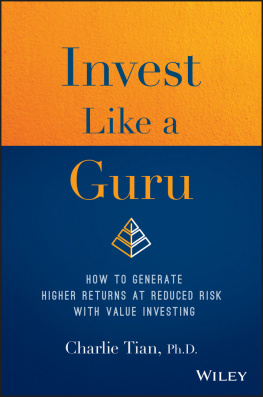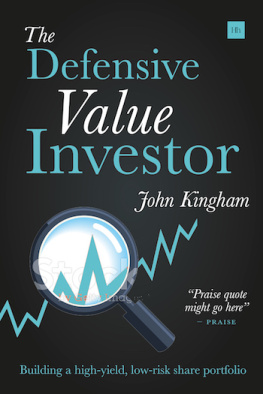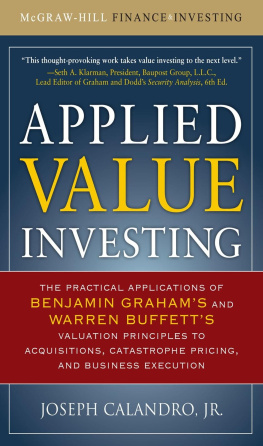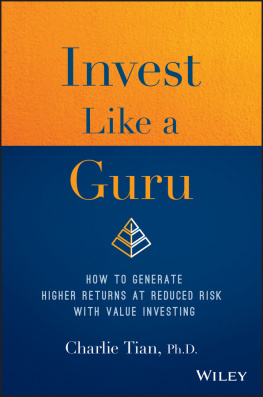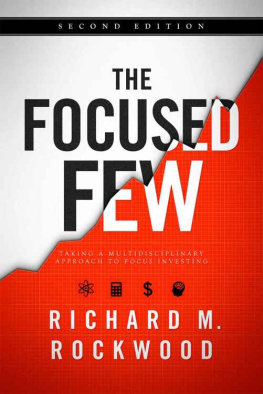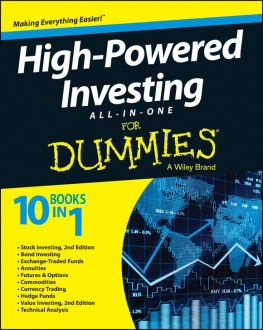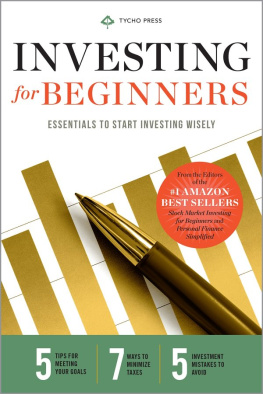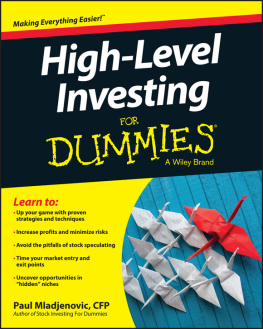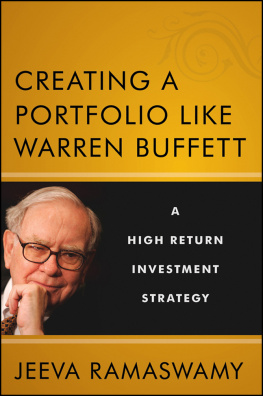
Copyright 2017 by John Wiley & Sons, Inc. All rights reserved.
Published by John Wiley & Sons, Inc., Hoboken, New Jersey.
Published simultaneously in Canada.
No part of this publication may be reproduced, stored in a retrieval system, or transmitted in any form or by any means, electronic, mechanical, photocopying, recording, scanning, or otherwise, except as permitted under Section 107 or 108 of the 1976 United States Copyright Act, without either the prior written permission of the Publisher, or authorization through payment of the appropriate per-copy fee to the Copyright Clearance Center, Inc., 222 Rosewood Drive, Danvers, MA 01923, (978) 750-8400, fax (978) 646-8600, or on the Web at www.copyright.com. Requests to the Publisher for permission should be addressed to the Permissions Department, John Wiley & Sons, Inc., 111 River Street, Hoboken, NJ 07030, (201) 748-6011, fax (201) 748-6008, or online at http://www.wiley.com/go/permissions.
Limit of Liability/Disclaimer of Warranty: While the publisher and author have used their best efforts in preparing this book, they make no representations or warranties with respect to the accuracy or completeness of the contents of this book and specifically disclaim any implied warranties of merchantability or fitness for a particular purpose. No warranty may be created or extended by sales representatives or written sales materials. The advice and strategies contained herein may not be suitable for your situation. You should consult with a professional where appropriate. Neither the publisher nor author shall be liable for any loss of profit or any other commercial damages, including but not limited to special, incidental, consequential, or other damages.
For general information on our other products and services or for technical support, please contact our Customer Care Department within the United States at (800) 762-2974, outside the United States at (317) 572-3993 or fax (317) 572-4002.
Wiley publishes in a variety of print and electronic formats and by print-on-demand. Some material included with standard print versions of this book may not be included in e-books or in print-on-demand. If this book refers to media such as a CD or DVD that is not included in the version you purchased, you may download this material at http://booksupport.wiley.com. For more information about Wiley products, visit www.wiley.com.
Library of Congress Cataloging-in-Publication Data is Available:
ISBN 978-1-119-36236-4 (Hardcover)
ISBN 978-1-119-36242-5 (ePDF)
ISBN 978-1-119-36240-1 (ePub)
Cover Design: Wiley
Cover Images: texture gaffera/Getty Images, Inc.; icon RENGraphic/Getty Images, Inc.
To my parents, wife, and children
Acknowledgments
I want to thank Lei, my wife, for the strength and inspiration she gives me daily. Thanks to my parents for their encouragement and trust throughout my life. Thanks to my son, Charles, who programmed the first version of GuruFocus DCF Calculator when he was 12; my daughter Alice, whose soccer games have been my biggest joy; and my little son, Matthew, who has brought me so much fun and happiness.
I also want to thank Don Li, Holly LaFon, David Goodloe, Vera Yuan, and many others at GuruFocus. They have transformed GuruFocus from good to great.
Thanks to the 300,000 GuruFocus users and 18,000+ subscribers for their constant feedback and suggestions over the past 12 years. They have helped us make GuruFocus.com a better website.
I cannot express enough appreciation to Warren Buffett and Peter Lynch, although they will probably never know this. Their teaching has unleashed my full potential and led me to reach new heights in life. I am grateful to the United States of America. This great land has given me the opportunity to fulfill my dreams. I also give thanks to my alma mater, Peking University. The rigorous training I received during my 11 years there prepared me for quick learning across different fields.
I also want to thank the Gurus who gave me the opportunities to speak with them and interview them over the years. These Gurus include Prem Watsa of Fairfax Financial, Francis Chou of Chou Associates, Joel Greenblatt of Gotham Funds, Tom Russo of Gardner and Russo, Don Yacktman and Jason Subotky of Yacktman Asset Management, Jeff Auxier of Auxier Capital, Tom Gayer of Markel Corp., and many others.
Thanks to Erin McKnight, Jennifer Afflerbach, who has edited my writing, and my friends, LeAnn Chen and Wenhua Di, for their comments and suggestions.
Introduction
Before I came to the United States, I'd never envisioned being caught up in a stock market mania that would drastically alter my career and completely change my life. I loved physics, which I had studied for many years, and assumed I would become a physics professor someday. I'd never had anything to do with the stock market.
The summer of 1998 was hot, even for Texas. I came to work for Texas A&M University in an equally hot field in the physics department: fiber optics and lasers. This was during the momentous expansion of the Internet and the telecommunication industry, and everything related to the technological boom was hot, everything related to fiber optics was hot!
By then, I already had my PhD in physics in the field of lasers and optics from Peking University. I was excited to be working in a field that seemed to hold unlimited potential, and I found that people like me were in strong demand. In less than two years I was recruited by a fiber optical communications company that would soon go public. Business was booming. The company had dramatically expanded its office space and hired hundreds of additional engineers. The benefit that most attracted people to work for this particular company was its stock option offering. I had no idea what stock options wereI just knew that they would be worth a lot of money!
Everyone was talking about stocks and stock options. It sounds like fun! And it can make me money! I need to buy stocks, I told myself. I need to buy fiber optics stocks!
I felt that I had an edge. After all, I had worked with lasers and fiber optics for many years. I had published many research papers and would ultimately be awarded 32 patents in the field. I knew exactly how fiber optics worked.
I also knew the fiber optics companies. I used their products in my work, and demand for them was tremendous. Internet traffic was booming and the need for Internet capacity and fiber optics networks was expected to grow 1,000 percent a year. Companies like Global Crossing were laying fiber across oceans. WorldCom was hosting an exciting Terabyte Challenge, which would squeeze a terabyte per second of bandwidth into a single optical fiber. The demand for fiber network capacity, it seemed, would grow exponentially, forever.
In a trillion-dollar market, no one could lose, analysts wrote. The stocks of these fiber optics companies would double in three months, and that was true for every fiber optics company that was going public.
I started my shopping spree. In 2000, I bought the stocks of fiber optics companies New Focus, Oplink, and Corning. Corning, the old dog that learned a new trick in fiber optics, was making the optical fiber cable used in fiber networks. It didn't disappoint me, quickly doubling and then some. Corning was doing so well in fact that the stock went on a 3:1 split. It was fun!
But, I would later realize, I was lucky I didn't have much money to buy stocks with back then.
The Bloodbath
The party didn't last very longand I'd arrived late.
Without my realizing it, things were turning sour with my employer. By the end of 2000, the company was already quietly laying off contractors and temporary workers. It turned out that our biggest customers, WorldCom and Global Crossing, were having their own problems and had stopped buying equipment.
Next page
